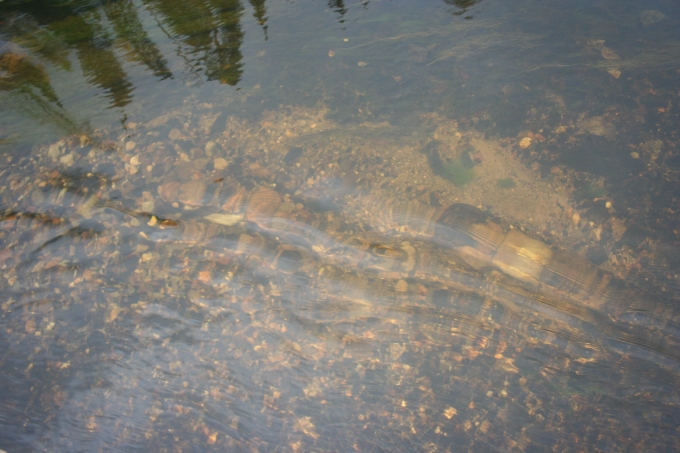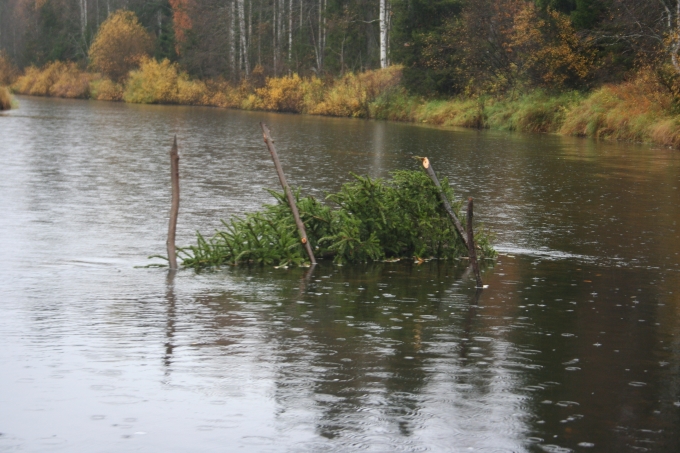Monitoring of the Salmon Spawning Grounds: Current Evaluation of the Situation
An annual research expedition on monitoring of the spawning grounds of the Atlantic salmon population in the Mezen was held this year between late September and early October. In addition to the Silver Taiga Foundation employees – ecologists Nikolay Shuktomov and Nikolay Shilov, and the driver Sergey Davydov, it was attended by a specialist of FSBI “Komirybvod” Alexey Politov, inspector of the Department of state control, supervision and protection of aquatic bioresources Andrey Druzhkov, as well as the representatives of the local community “Udorachi”.
This is already the forth such expedition conducted within the framework of the Model River Mezen project. Its participants have examined the upper reaches of the Mezen and the tributaries Upper Puzla, Lower Puzla, and Pyssa. Unfortunately, this year a monitoring on the Yolva has not been organized due to the fact that not all of the partners, cooperating in the framework of the Mezen project, have been able to participate in the expedition. A representative of the Ministry of Nature of the Komi Republic – Head of the Udora district committee for environmental protection Nikolay Krivushev – has not taken part in the monitoring works performed this year at all. Besides, unlike past years, only one FSBI “Komirybvod” specialist has participated in the expedition. Consequently, it was necessary to change the plans almost “on the fly” and to reshape the expedition groups. On the other hand, thanks to the seminar held shortly before the expedition, this year the participants have been better prepared for the practical work on the river.
As in past years, the main expedition objective was counting of the redds number, and assessment of the salmon reproduction conditions on these spawning tributaries. At the same time, the observations have been conducted and the poaching situation has been assessed. As in previous years, the poaching traces have been detected almost on all examined sites. These are fences, including the new ones (see photo) and stakes for the fishing nets. Besides, a speared fish has been seen on the Pyssa. However, according to the observations of the expedition participants, this year a number of illegal fences on the upper reaches of the Mezen turned out to be less than before. On the other hand, the group faced the fresh clearings on the watershed of the Lower Puzla.
Talking about the number of the detected redds, according to the expedition lead Nikolay Shuktomov, in general, the situation was almost the same as last year. However, it should be taken into account, that, most likely, the prolonged warm autumn and low water (it was a small amount of rain in August and September) “postponed” the time of the main spawning for a later period. In any case, it’s required to continue the monitoring at least for two more years, and only then try to identify some dynamics and draw conclusions – both on the change of the spawning conditions and filling of the spawning grounds.
The organizers of the autumn spawning grounds monitoring hope that next year a circle of participants and interested organizations will broaden. This is important for the qualitative performance of works and, accordingly, achievement of the objective results. In addition, a wide range of interested participating organizations promotes an increasing public awareness of the critical salmon resources situation. Monitoring surveys are vitally important to objectively assess the condition of the Mezen population, define the main reasons of its reduction, and develop a restoration program for this valuable species jointly with the Arkhangelsk region.
Valentina Semyаshkinа
Photos are made by Nikolay Shilоv
Translated by Irina Sokolova



